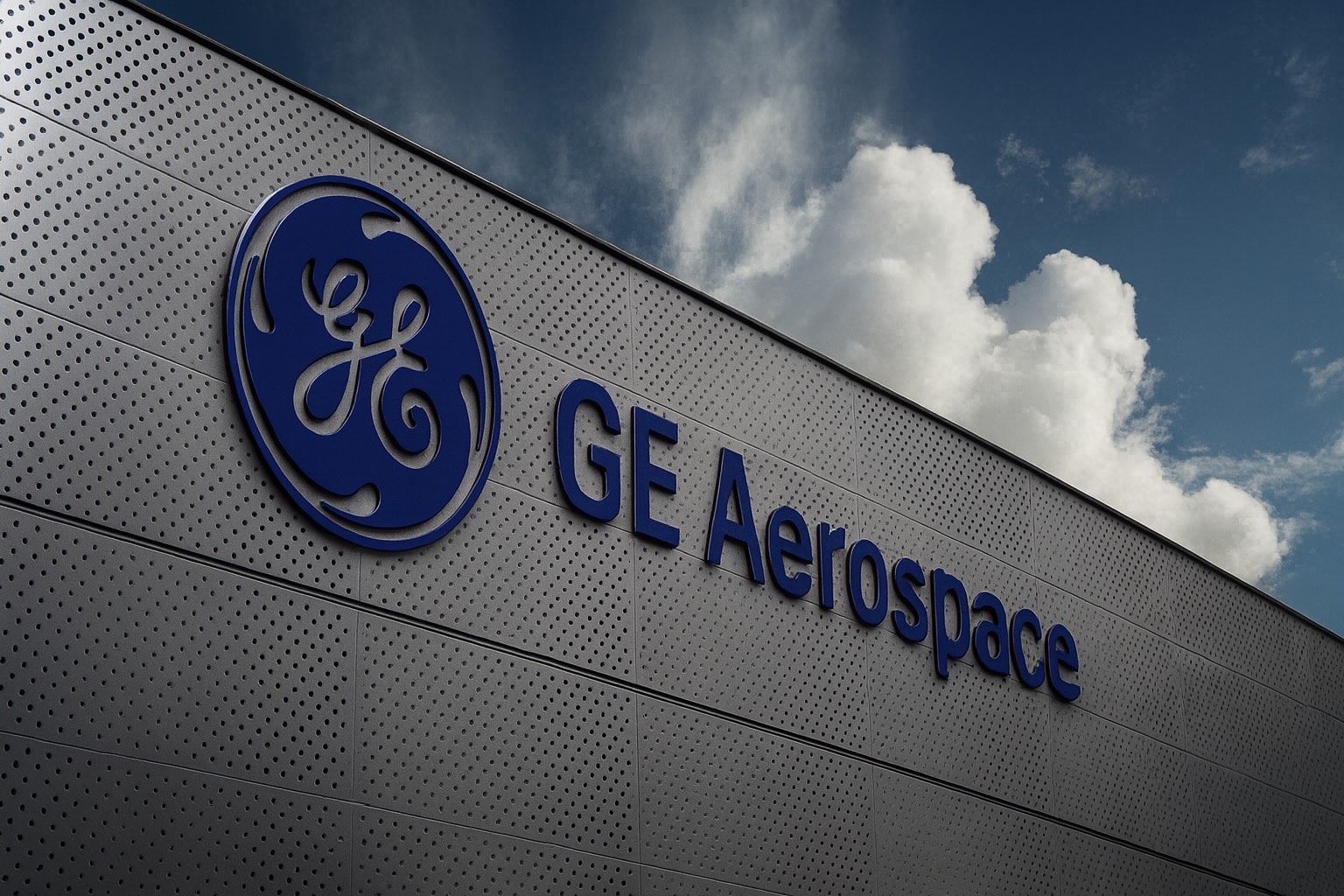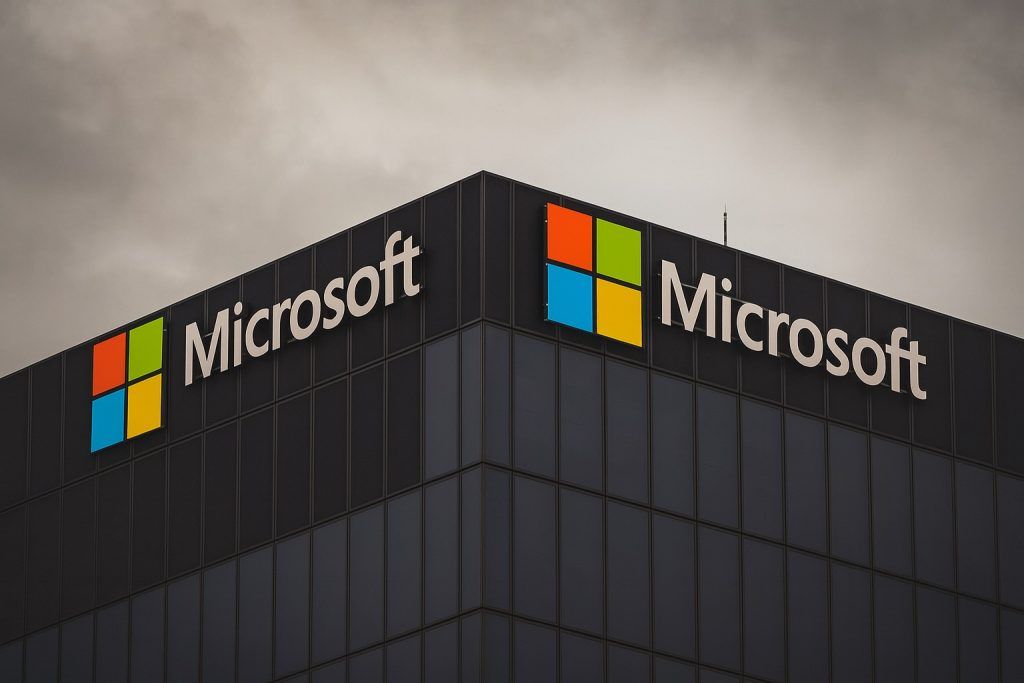- Stock at All-Time High: GE Aerospace (NYSE: GE) shares spiked after Q3 results, briefly trading above $316 on Oct. 21 before settling around the $300s [1] [2]. As of Oct. 24 close the stock was ~$303.97, up ~82% year-to-date [3] [4].
- Blowout Q3 Earnings: On Oct. 21 GE Aerospace reported adjusted Q3 EPS of $1.66 (+44% YoY) on revenue of $12.2 B (+24% YoY) [5]. Both topped forecasts (~$1.47 EPS on $10.9 B revenue) [6]. Free cash flow conversion exceeded 130% and backlog remains enormous (>$175 B) [7] [8]. Management raised full-year guidance (2025 EPS now $6.00–6.20 vs prior $5.60–5.80) [9] [10].
- Bullish Market Response: Shares popped ~5% on the news [11] and hit record highs before pulling back. Analysts from Goldman Sachs to UBS swiftly raised price targets (e.g. GS to ~$321, UBS to ~$366) [12]. Most Wall Street firms now rate GE “Buy” or “Outperform,” though average 12‑month targets (~$264) suggest limited upside from current levels [13] [14].
- Key Strategic Moves: Recent developments include a 7-year AerCap engine support deal [15], a major F110 fighter-engine contract ($5B) [16], and new engine wins (Korean Air, Cathay Pacific) [17]. The board added aerospace veteran Wesley Bush (ex–Northrop Grumman CEO) and waved goodbye to Steve Angel (to CSX CEO) [18] [19].
- Macro Tailwinds vs. Risks: Post-pandemic air travel is surging (IATA data: +12% passenger-miles in 2024 [20]), and defense budgets are high, benefiting GE’s civil and military engines. Boeing’s approval to boost 737 MAX output (to 42/month) promises more engine orders [21] [22]. However, high inflation/interest rates, trade tariffs (GE estimates ~$500M tariff cost in 2025 [23]) and rich valuations (~43× forward EPS [24] [25]) pose headwinds.
Stock Price and Recent Performance
GE Aerospace stock has surged in 2025. As of Oct. 24, GE closed at $303.97 (NYSE: GE) [26], near its all-time peak (~$316) reached Oct. 21 [27] [28]. That marks roughly an 82% gain year-to-date [29]. This stellar run outpaces major peers: for instance, over the past three years GE’s stock is up ~580%, dwarfing RTX’s ~84% and Honeywell’s ~15% gains [30]. GE’s market cap is now around $320 B, making it one of the largest industrial stocks (bigger than RTX and any other pure-play aerospace company). The stock still carries high growth multiples (trailing P/E ~42.8, PEG ~5.84 [31]), reflecting lofty investor expectations.
In the week before Oct. 25, GE’s shares traded mostly between ~$297–$308. Intraday on Oct. 25 they opened near $307 but pulled back to the high-$290s [32]. This day’s modest dip came as the broader market pulled back and as profit-taking set in. Overall, GE has far outperformed Boeing (BA), RTX and other defense stocks this year, driven by investor enthusiasm over its aviation story [33] [34].
Major News and Developments
The biggest news has been GE Aerospace’s Q3 earnings beat and guidance raise on Oct. 21. The Ohio-based engine maker crushed expectations (adjusted EPS $1.66 vs ~$1.45 consensus, +44% YoY [35]) and lifted 2025 revenue/earnings guidance across the board [36] [37]. CEO Larry Culp noted “strong services and engine output for our customers” under the company’s Flight Deck productivity program [38]. Management also announced hefty share buybacks ($7B for 2025) and a 30% dividend hike, signaling confidence [39].
Several strategic deals and wins have recently surfaced. In mid-October, GE signed a 7-year service contract with AerCap (major aircraft lessor) to support its new GE9X and other engines [40] – a coup that shores up future aftermarket revenue. Earlier this year GE won a $5 B US defense contract for F110 fighter engines, plus committed ~$1 B to U.S. factory investments [41]. Commercially, it secured engine orders from Korean Air (for 103 Boeing jets) and additional GE9X engines from Cathay Pacific [42]. R&D partnerships also continue – e.g. a joint project with Beta Technologies on hybrid-electric engine generators [43].
On the corporate front, GE Aerospace’s board saw a notable shuffle. Wesley G. Bush (former Northrop Grumman CEO) will join the board on Dec 1, 2025, bringing decades of aerospace leadership [44] [45]. At the same time, longtime board member Steve Angel (who led GE Vernova) will depart to become CSX’s CEO [46]. These changes reinforce the company’s defense credentials and may be seen as strength in governance. No major M&A moves have been reported, but GE continues to divest non-core units (e.g. earlier spin-offs) and focus on its core aerospace business.
Forecasts and Expert Analysis
Wall Street is generally optimistic on GE Aerospace’s outlook, thanks to surging engine demand and improved operations. The average 2025 EPS forecast is around $5.87 [47] (implying ~27% growth), and analysts expect similar double-digit revenue growth. [48] [49] TS2.tech notes that even the “bear” cases still put GE in the mid-$200s in the near term [50].
For Q4 and beyond, the big question is execution. Most analysts see continued momentum: Zacks/Finviz called for roughly $1.46 EPS on $10.3B Q3 revenue (actual beat both) [51]. Citing airline feedback, Culp told Reuters airlines were “all upbeat about the outlook for… next year” [52]. If this holds, a strong Q4 could push GE’s 2026 outlook even higher. Some bullish models even project GE hitting the mid-$600s by 2030 in an upside scenario [53], leveraging its dominant 737- and A320neo engine positions and vast services backlog.
However, bears caution that much of the good news may be priced in. GE trades near the top of its valuation range (~36–40× forward earnings [54]). Any supply-chain hiccups or airline softness could trigger a pullback. TS2.tech points out that technical models give a wide 2026 range (bear ~$241 vs bull ~$297) [55]. In sum, experts say the next earnings and guidance (late Oct/Nov) will be the key catalyst: another blowout could send the stock higher, but any lukewarm tone might prompt profit-taking.
Analyst Ratings and Wall Street Sentiment
Nearly all major brokerages have been raising price targets and reiterating buy ratings. After the Q3 beat, for example, Goldman Sachs lifted its 12‑month target to ~$305 (maintaining “Buy”) [56], while UBS quickly hiked its target into the mid-$300s [57]. A Reuters report collated multiple analyst actions on Oct 22: UBS to $366, Deutsche Bank to $360, Wolfe Research to $340, RBC to ~$300, President Capital to $355, Goldman to $321, etc [58]. Bernstein (SocGen) is a noted skeptic, with a ~$254 target, but the consensus remains “Moderate Buy” [59] [60].
Technical indicators also remain bullish. Institutional buying has outpaced selling since Q2, and GE’s earnings “ESP” gauge (revisions vs original estimates) was +2% heading into Q3, a bull signal historically (GE beat in each of the last 4 quarters under similar conditions [61]). Short interest is relatively modest, and analysts’ EPS revisions have generally trended upward. In all, sentiment is largely positive, though some traders warn that the stock is now behaving more like a high-growth tech name (with attendant volatility) than a traditional industrial.
Technical and Fundamental Analysis
On fundamentals, GE Aerospace is stronger than a few years ago. Q3 GAAP profit was $2.5 B (+33% YoY [62]), thanks to higher volumes and improved margins. The backlog of ~$176 B [63] covers many years of production for Boeing, Airbus, military jets, and services. Free cash flow has been robust (over $2.4 B in Q3, +30% YoY [64]). Key valuation metrics: TTM revenue ~$41.6B [65], market cap ~$318 B, P/E ~42.8 [66], PEG ~5.84. By comparison, RTX’s P/E is in the mid-20s, Lockheed’s ~27, suggesting GE is richly valued reflecting its faster growth.
Technically, the stock has been in a steep uptrend since late 2024. It broke out decisively past the $270 resistance (old highs) in August 2025 and briefly touched ~$320 post-earnings [67]. On the daily chart, it is now pulling back toward support near $300–305. Analysts note that if this level holds and earnings continue to surprise, momentum could resume. However, a failure there could risk a test of the 50-day moving average (roughly ~$285). In any case, the chart is marked by very high volume on up-days and relatively low volume on pullbacks, suggesting strong institutional interest.
Comparison to Peers (RTX, LMT, BA)
GE Aerospace’s stock surge has left many peers behind. For context, RTX (Raytheon Technologies) – GE’s old parent company – reported solid Q3 on Oct. 21: revenue +12% to $22.5 B, adjusted EPS $1.70 (+17%) [68], and raised its 2025 EPS outlook to $6.10–6.20 (from $5.80–5.95) [69]. RTX’s shares also rose on the news, but its stock is up only ~40% YTD (vs +82% for GE) thanks to its longer earnings guidance. Lockheed Martin (LMT) also had a good quarter on Oct. 21: Q3 sales +8.8% to $18.61 B, EPS $6.95 beating $6.36 est [70], and it raised 2025 EPS guidance to $22.15–22.35 [71]. Lockheed’s shares jumped initially but quickly settled, yielding a modest YTD gain. Boeing (BA) still lags industrial peers. Its stock rallied on Oct. 17 after the FAA approved boosting 737 MAX production to 42/mo [72], a positive for GE’s LEAP engine franchise. However, Boeing remains unprofitable this year, and GE’s stock (and valuation) reflect much stronger momentum than BA.
Overall, GE Aerospace is seen as the hottest aerospace/defense stock on the market. As one expert noted, “GE’s streamlined aerospace company’s improved efficiency and profitability have made it a winner on Wall Street” [73]. By comparison, analysts say RTX and Lockheed offer more modest growth and still face aerospace belt-tightening risks (while BA is battling quality issues). GE’s focus purely on jet engines – selling high-margin long-term service contracts after each engine sale – underpins its lofty premium. In the past three years since spinning off, GE’s aerospace business outperformed RTX, Honeywell and the broader index by a wide margin [74].
Industry and Macroeconomic Context
Broad trends are highly favorable for GE Aerospace. Global air travel has rebounded powerfully since COVID, with IATA reporting passenger-miles up ~12% in 2024 vs 2023 [75]. Airlines deferred new aircraft deliveries in favor of maintenance last year; as those delays ease, engine orders will follow. Airbus and Boeing are both ramping production: for example, Boeing can now build more 737s (42/mo) [76], and Airbus has publicly pushed back on engine supply constraints. GE’s engine backlog and services pipeline stand to benefit as the fleet ages and OEMs accelerate builds.
Defense spending is another tailwind. Governments are pouring billions into fighter jets, helicopters, and missiles amid geopolitical tensions. Lockheed cited “simmering conflicts” and large contracts when lifting guidance [77]. GE’s military engine unit (defense & propulsion) is feeding off the same wave: the F-35 logistics support and Patriot missile programs should keep orders strong. A recent Deloitte study notes global defense budgets exceeded $2.4 T in 2023 [78], with more likely forthcoming as allies seek new capabilities. In sum, GE stands to gain from both civil and military aviation upcycles.
Of course, macro risks remain. Persistently high inflation and interest rates could pressure airline capital spending and valuations of high-multiple stocks like GE [79]. GE itself warned of roughly $500 M in additional tariff costs in 2025, shifting that burden to customers [80]. If the Federal Reserve tightens further, or if a recession dampens travel growth, all cyclical aerospace firms could suffer. For now, GE’s management believes the good is outweighing the bad: Culp told Reuters he’s meeting “dozens of airline chiefs…who were all upbeat about the outlook” [81]. Whether that optimism persists into 2026 will be a key test.
Sources: Company filings and press releases [82] [83]; Reuters and major news coverage [84] [85] [86]; financial analysis sites [87] [88] [89] [90]; expert commentary from Investopedia and TS2.tech [91] [92]. All data as of Oct. 25, 2025.
References
1. www.investopedia.com, 2. www.marketbeat.com, 3. www.marketbeat.com, 4. www.marketbeat.com, 5. www.investopedia.com, 6. www.investopedia.com, 7. ts2.tech, 8. www.geaerospace.com, 9. www.reuters.com, 10. www.investopedia.com, 11. www.investopedia.com, 12. www.marketscreener.com, 13. ts2.tech, 14. www.marketscreener.com, 15. ts2.tech, 16. ts2.tech, 17. www.geaerospace.com, 18. www.geaerospace.com, 19. www.geaerospace.com, 20. ts2.tech, 21. ts2.tech, 22. www.reuters.com, 23. ts2.tech, 24. www.finder.com, 25. ts2.tech, 26. www.marketbeat.com, 27. www.investopedia.com, 28. www.marketbeat.com, 29. www.marketbeat.com, 30. www.investopedia.com, 31. www.finder.com, 32. www.finder.com, 33. www.investopedia.com, 34. www.marketbeat.com, 35. www.investopedia.com, 36. www.reuters.com, 37. www.geaerospace.com, 38. www.geaerospace.com, 39. ts2.tech, 40. ts2.tech, 41. ts2.tech, 42. www.geaerospace.com, 43. ts2.tech, 44. www.geaerospace.com, 45. www.geaerospace.com, 46. www.geaerospace.com, 47. ts2.tech, 48. www.reuters.com, 49. ts2.tech, 50. ts2.tech, 51. ts2.tech, 52. www.reuters.com, 53. ts2.tech, 54. ts2.tech, 55. ts2.tech, 56. ts2.tech, 57. www.marketscreener.com, 58. www.marketscreener.com, 59. ts2.tech, 60. www.marketscreener.com, 61. ts2.tech, 62. www.geaerospace.com, 63. ts2.tech, 64. www.geaerospace.com, 65. www.finder.com, 66. www.finder.com, 67. www.investopedia.com, 68. www.rtx.com, 69. www.rtx.com, 70. www.reuters.com, 71. www.reuters.com, 72. www.reuters.com, 73. www.investopedia.com, 74. www.investopedia.com, 75. ts2.tech, 76. www.reuters.com, 77. www.reuters.com, 78. ts2.tech, 79. ts2.tech, 80. ts2.tech, 81. www.reuters.com, 82. www.geaerospace.com, 83. www.geaerospace.com, 84. www.reuters.com, 85. www.reuters.com, 86. www.reuters.com, 87. www.investopedia.com, 88. ts2.tech, 89. www.marketscreener.com, 90. www.marketbeat.com, 91. www.investopedia.com, 92. ts2.tech







